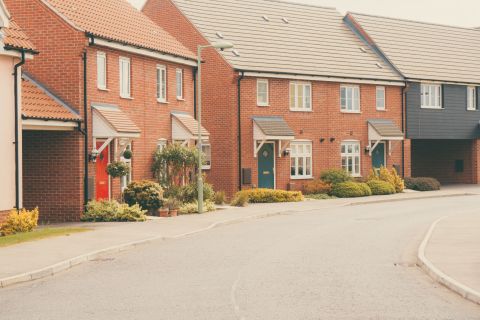News
Read the latest stories on the latest renewable HVAC developments.
Featured article
British Gas launches Dimplex Quantum Tariff
British Gas and Dimplex have partnered to launch the British Gas Dimplex Quantum Tariff, the UK’s most advanced electric storage heating tariff for use with the Dimplex Quantum Storage Heater.

Recommended products: Winter
We are now officially into the winter season. The temperatures have dropped so we are spending more and more time indoors, meaning we require products that will make our lives and homes more comfortable and comforting. Our top three products for this season ensure that you can escape the harsh winter weather and unwind in the warming haven that is your home.

Reclaim control of your heating with the Dimplex EvoRad2BT Oil-free Radiator
The Evorad2BT Bluetooth controlled oil free radiator from Dimplex is a highly versatile answer to the need for additional heating around the home.

Private ownership is key to ECO extension benefits
Homeowners and private tenants living in electrically heated homes will be amongst the biggest winners following the extension of the Government’s Energy Company Obligation (ECO) scheme, according to Dimplex.

Preparing your home heating this autumn
As the year rolls around once more it is time to welcome the autumn season and all that it will bring with it; leaves changing from shades of green to reds and browns and yellows, the migration of all kinds of birds and Halloween (and even Christmas) decorations starting to appear in the shops. As summer ends, autumn signifies the waning of the year.

Piping Hot – preventing burst water pipes in freezing weather
Chris Stammers, product marketing director, Dimplex
With rapid freeze/thaw cycles in the weather striking the UK there is a real threat of damage to household pipework. Whether a homeowner or a landlord you should be aware of the state of pipework and the potential impact of a burst pipe.

Part two: Fuel poverty in electrically heated homes
Around 2.2million households in the UK are electrically heated, which accounts for 8.5% of all homes. This includes storage heating (1.7million), direct acting heating systems (0.5million) and heat pumps (less than 0.1million). In total, 16% of electrically heated homes in England and 50% of electrically heated homes in Scotland are living in fuel poverty - a total of 454,480 households.

Part three: How does it happen?
There are two main reasons why people are left paying over the odds for their electric heating system. These issues need to be examined and be explored as to how they could be resolved using existing, proven, viable technologies.

The Future Homes Standard: Is 2023 the new 2025 (for a 75-80% carbon emission reduction)?
The Ten Point Plan may have just announced intentions for an earlier introduction of the Future Homes Standard than previously planned. Picked up by industry and the media alike, the initial announcement included details of moving the 2025 Future Homes Standard date to 2023. So, if 2023 is the new 2025, how can we prepare?

Part L and the UK’s Zero Carbon Future
The global consensus of the science underpinning the ‘Paris Agreement’ that entered into force on 4 November 2016 recognises the need to get to zero carbon emissions. But changing how millions of people live is a rather special kind of problem - the forces that shape our lives exist on many different levels. More than anything, the barriers to change are psychological, social, economic and political.

Part four: Real life solution
Concluding our current series on fuel poverty, we explore how Dimplex Quantum and Q-Rad heaters were implemented to bring a vast saving to a young couple in their 1960s property, and acts as an example of how Dimplex products can help those who are fuel poor.

Part 2 - London Environment Strategy: A heat pump solution
We’ve discussed what the London Environment Strategy means – but how can we achieve the required energy savings?

Part 1 - London Environment Strategy: What does it mean?
The draft London Environment Strategy, published by the Greater London Authority in August, sets out the authority’s plan to tackle environmental and energy challenges in the capital. It makes clear that if the target of making London zero carbon by 2050 is to be achieved, big changes need to be made to the way in which heating and cooling systems are designed.











